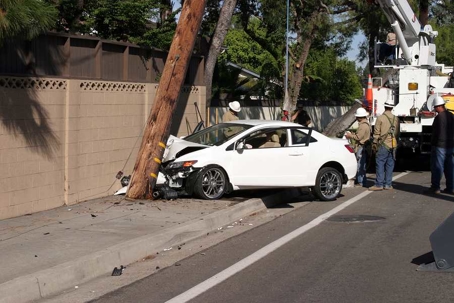How to Determine Who is at Fault in a Car Accident
The at-fault driver—and his auto insurance company—are typically responsible for compensating anyone who is injured in a car accident. Sometimes, determining which driver is at fault is simple. For example, if someone rear ends your vehicle while you are stopped at a red light, he would be at fault and responsible for compensating you for your injuries and property damage. However, there are other cases where fault is much more difficult to determine. Unfortunately, some personal injury cases may remain at a standstill until both sides can agree as to who is at fault. Here’s how your attorney and the other party’s insurance company will determine who is at fault for the car accident:
Police Reports
The police officer that responds to the scene of the accident will ask for statements from drivers and witnesses. This information, along with a close examination of the vehicles, will help the police officer determine who likely caused the accident. The officer will write a summary of the accident and identify the at-fault party within his official police report. He may also issue a traffic citation to the party he believes is at fault for the accident. Later, insurance companies and attorneys may request a copy of this report and use it as proof that one party was at fault.
Because the police report plays such a crucial role in determining fault, it’s imperative that you always call the police after a car accident. Even if the other driver does not want to get the authorities involved, it’s in your best interests to call them anyways so everything is documented.
Interview Witnesses
After a car accident, it’s recommended that you ask witnesses for their contact information. This way, your attorney can get in touch with them later to ask them questions about what they saw. This should be done as soon as possible after the accident so the details are still fresh in the witnesses’ minds. They may be able to give your attorney important information that helps determine fault. For example, a witness may report that he saw the other driver texting behind the wheel or driving above the legal speed limit. Clues like these can help your attorney prove that the other driver was entirely to blame for the accident.
Review Evidence
If your injuries do not require emergency medical attention, it’s important to gather evidence at the scene of the accident that you can later hand over to your attorney. Car accident victims are encouraged to take photographs of property damage, debris, visible injuries, and traffic signs or lights located nearby. All of these photos can help your attorney get a better understanding of exactly what happened. For instance, an attorney may be able to determine the angle at which the two vehicles collided just by looking at photos of the property damage. Skid marks on the road or paint marks on one of the vehicles also provide clues as to who crashed into who. To ensure your attorney has the evidence that he needs, take as many photos as possible at the scene. Photograph anything and everything—even if it doesn’t seem significant at the time.
Consult With Experts
In complicated car accident cases, an attorney or insurance company may consult with an expert to determine fault. Accident reconstruction experts are professionals that have a strong background in science, engineering, and law enforcement. They are often called into cases where liability is disputed so they can recreate the accident to determine fault.
An accident reconstruction expert can carefully examine all of the evidence from the scene of the accident, the victim’s medical records, and the police report to determine the speed at which both vehicles were traveling, the location of both vehicles prior to the accident, and the force of the impact. These experts can even create animations or 3-D models to demonstrate exactly how the accident occurred.
It’s possible that your attorney and the other party’s insurance company will both hire their own accident reconstruction experts. In some cases, the two experts will reach very different conclusions as to who was at fault. If this happens in court, the jury will likely side with whichever expert they believe to be the most credible.
Proving Liability
Sometimes, the other driver’s insurance company can be persuaded after being presented with enough evidence. At this point, negotiations between the insurance company and your attorney would begin. In the event that both sides cannot reach an agreement regarding fault, your attorney may suggest taking your case to court so you can let a jury decide.
It’s important to note that California is a pure comparative negligence state. What does this mean? In many accidents, more than one party may be at fault, including the victim. When multiple parties are found liable for a car accident in California, a percentage of fault must be assigned to each party. For instance, it’s possible that the jury may decide that you are 30% liable for the accident and the other driver is 70% liable. In this case, you would only be entitled to receive 70% of the total settlement. To avoid losing a portion of your settlement, it’s up to your attorney to convince the jury that the other party is solely to blame for the collision.
Have you been injured in a car accident that was not your fault? If so, get in touch with an experienced personal injury attorney as soon as possible. Contact Carpenter & Zuckerman today to schedule a free consultation regarding our case. Our attorneys will immediately begin investigating your case to determine liability so we can help you recover compensation for your medical expenses, lost wages, pain and suffering, and more.

